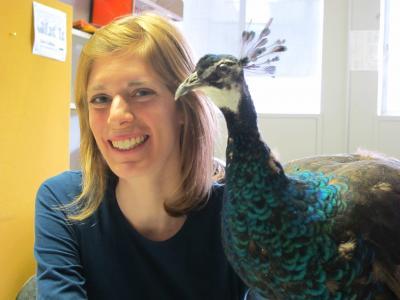Male peacock tail plumage and courtship antics likely influence their success at attracting and mating with females, according to recent Queen's University research.
Roz Dakin and Robert Montgomerie have found that natural variation in the number of eyespots on a peacock's tail does not impact a male's mating success. However, peacocks whose tails are clipped to considerably reduce the number of eyespots are less successful at mating.
Female rejection of males with substantially fewer eyespots on their tails may have a number of explanations, including the perceived maturity of the male, the overall size of his tail, or even a female's concerns about the health of her potential mate.
"Females may reject a few males with substantially reduced eyespot number, while using some other cues to choose among males with typical tails," explains Ms Dakin, a doctoral candidate in the Department of Biology who has four years of fieldwork experience examining the birds' iridescent colouration. "It seems likely that other characteristics of the tail's colours and patterns are critical for peafowl mate choice."

Roz Dakin, a doctoral candidate in Queen's University Department of Biology, has four years of fieldwork experience examining peacocks' iridescent coloring and courtship behaviors.
(Photo Credit: Queen's University)
Ms Dakin and Dr. Montgomerie, a professor in the Department of Biology at Queen's, ultimately want to know what females are thinking during courtship, a difficult objective given the various factors at play. They are examining peahens' movements, behaviours, and visits to males within the context of males' colouration and where the males position themselves geographically.
"Courtship and sexual selection in these animals is undoubtedly very complex," says Ms Dakin. "There are numerous factors to consider, including their colourful bodies and the feather displays on their heads. Males also call to females and engage in energetic displays. Males even seem to selectively position themselves in sunlight to make the most of their beautiful colours."
This research was published recently in the journal Animal Behaviour.
Source: Queen's University